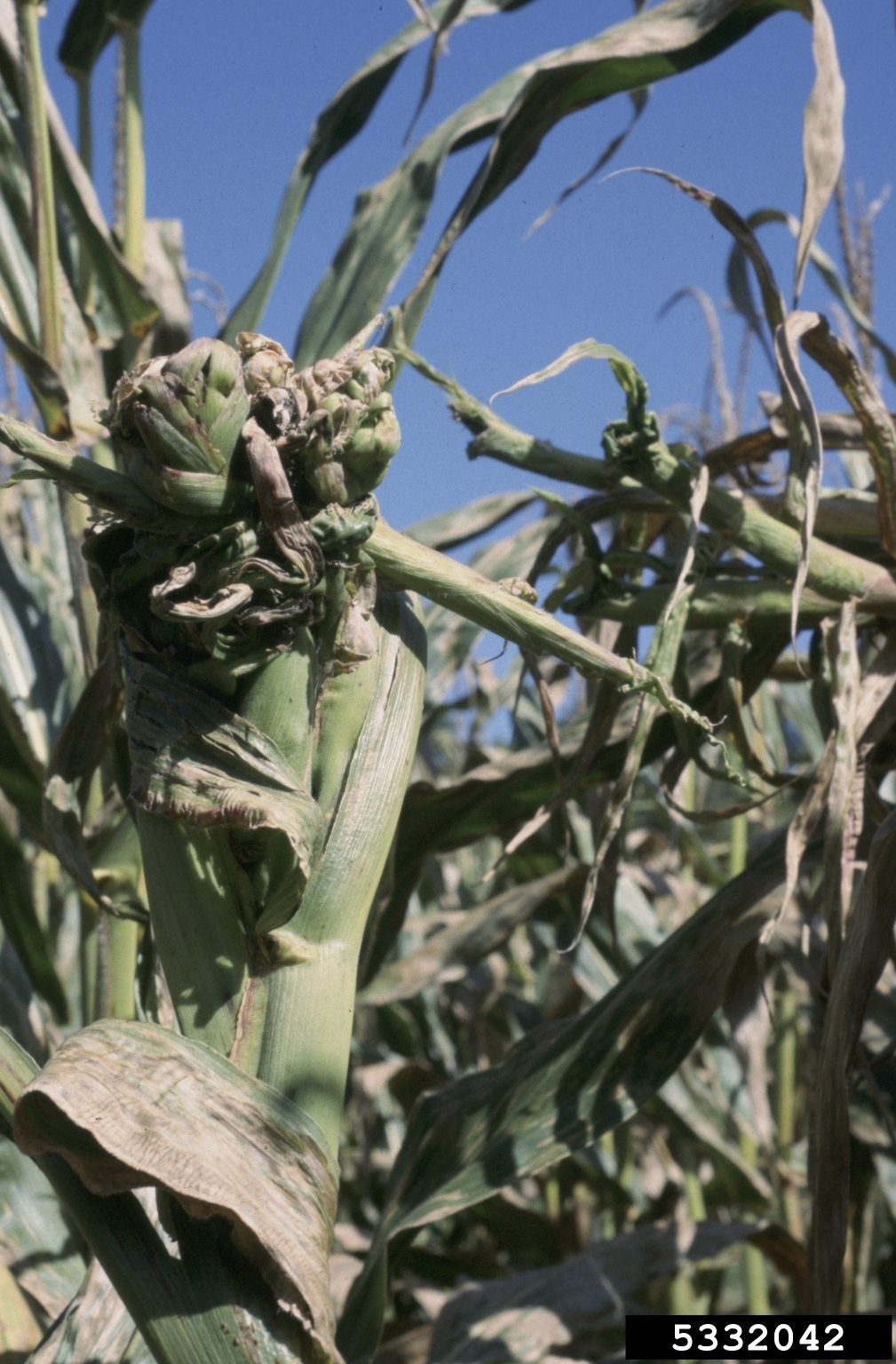Sweet Corn With Downy Mildew – Tips On Treating Sweet Corn Crazy Top


All gardeners will inevitably have to deal with fungal diseases at one point or another. Fungal diseases such as powdery mildew or downy mildew can infect a wide variety of host plants. However, how downy mildew presents itself can depend on the specific host plant. Downy mildew of sweet corn, for example, is also known as crazy top because of its unique symptoms on sweet corn plants. Read on for more information about sweet corn crazy top downy mildew.
Sweet Corn Crazy Top Info
Downy mildew of sweet corn is a fungal disease caused by the pathogen Sclerophthora macrospora. It is a soil borne fungal disease that can remain dormant in the soil for up to ten years, until perfect weather conditions activate its growth and spread. These perfect conditions are generally caused by flooding or waterlogged soils that last for at least 24-48 hours. Crazy top downy mildew can also infect other plants such as oats, wheat, foxtail, sorghum, millet, rice and a variety of grasses. The disease can be spread from these infected plants to sweet corn. In sweet corn, crazy top downy mildew earns its common name from the unusal growth it causes at the tips of the plant. Rather than producing pollen-filled flowers or tassels, infected sweet corn plants will develop excessively bushy, grass, or blade-like growth at their tips. Other symptoms of sweet corn with downy mildew include stunted or distorted growth of young sweet corn plants, yellowing or yellow streaking of foliage, and ‘downy’ or fuzzy spore growth on the undersides of leaves. However, crazy top downy mildew rarely causes significant crop loss. It is usually only found in small portions of cornfields where flooding frequently occurs due to poor drainage or low areas.
Treating Downy Mildew of Sweet Corn Crops
Most infections of sweet corn with downy mildew occur in spring or early summer when rain is frequent. The plants affected are oftentimes young plants, only 6-10 inches (15-25.5 cm.) high that have been exposed to standing water or over watering. While treating sweet corn crazy top with fungicides once the disease is present is usually not effective, there are preventative measures you can take to keep your sweet corn plants free of this disease. Avoid planting sweet corn in low lying areas or areas prone to flooding. Cleaning up plant debris and controlling grassy weeds around corn crops will also help, as will crop rotation. You can also purchase and plant disease resistant varieties of sweet corn.
Sign up for the Gardening Know How newsletter today and receive a free copy of our e-book "How to Grow Delicious Tomatoes".

Darcy is a former contributor to Gardening Know How. She is a professional landscape designer and gardening writer with experience in plant sales. An avid gardener, Darcy has a passion for sharing practical tips to help others grow.